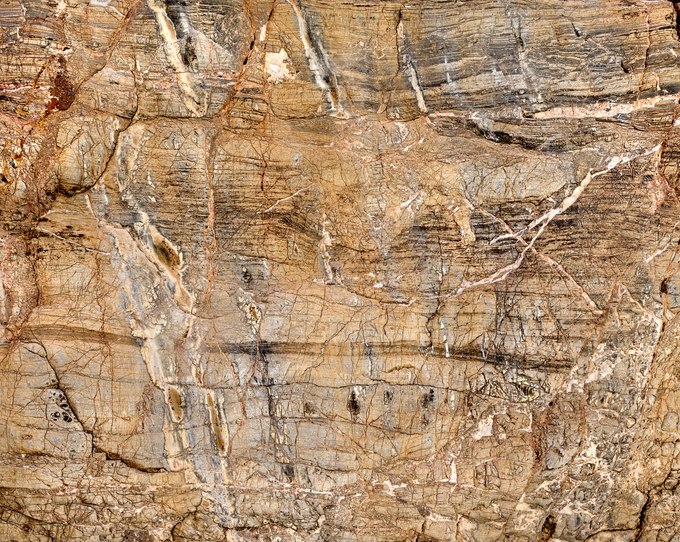The geologic complexity of the Grapevine Mountains along the California/Nevada border was first described in 1875 by geomorphologist G.K. Gilbert, who noted, "the strata are greatly disturbed and dislocated… " Cutting across the strike of the mountain range, Titus Canyon is an anomaly in an extraordinarily dry desert; the mightiest force in carving this canyon is the desert's rarest commodity, water. In the deepest reaches of the canyon where this photograph was taken, the rapid runoff of flash floods cut the stream channel down (rather than widening it), racing along a narrow path, smoothing its vertical walls almost to a polish.
The walls are limestone and dolomite born of algae, silt, and mud deposited in warm shallow water, savannahs, and forests 500 million years ago, not long after complex life forms first appeared on our planet. The fossils and remnants of chert and other rocks, slices of which are embedded in these walls, reflect the geologic strangeness of that time. The tortured evolution of this wall is represented by its chaotic veining, intrusions, fractures, and a web of hairline cracks that speak to the multifarious movements of the earth's crust at play. This wall has been so wholly upended that it has been folded on top of itself and is, in places, resting upside down as though tectonic forces were laminating its layers like pastry dough.
Location research and commentary by James Baker.

